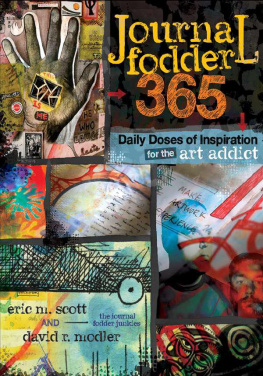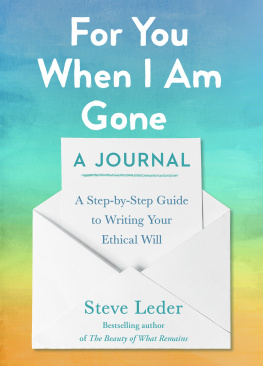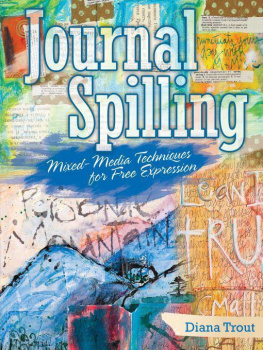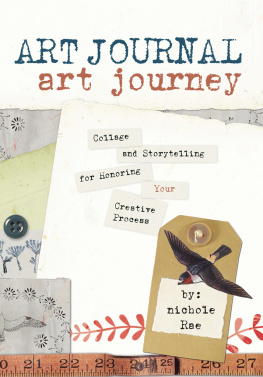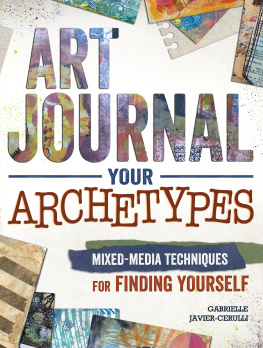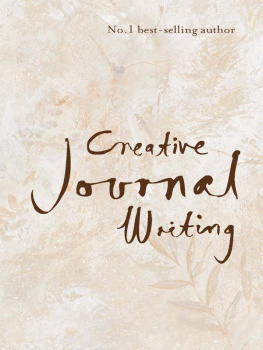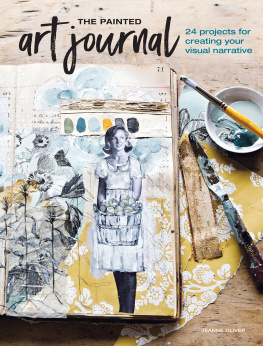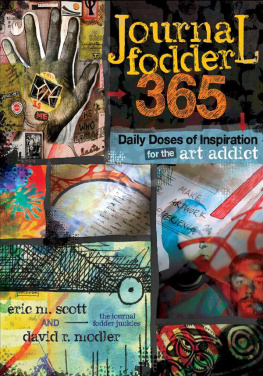Thank you for purchasing this Artist Network eBook.
Sign up for our newsletter and receive special offers, access to free content, and information on the latest new releases and must-have art resources! Plus, receive a coupon code to use on your first purchase from NorthLightShop.com for signing up.
or visit us online to sign up at
http://artistsnetwork.com/ebook-promo
Contents
Introduction
With the release of our first book, The Journal Junkies Workshop, we began to understand and appreciate how our approach to the visual journal differs from many others out there. It is not about having completed, artful pages; it is about documenting our lives and throwing everything into the journal. A quick glance through some of the journaling books, makes it clear that many people use the journal as a very special place, an exalted place, a place to explore very specific and deep themes or a place to make finished works of art. And thats fine. Were not being critical of those approaches because the journal will be what it needs to be for each individual. We often explore deep issues in our journals and many of our pages are more like finished works of art. But overall we see the journal as more of a workhorse, for the everyday bloke, more blue-collar and not so prim and proper. That is because we put so much of our everyday into it. We dont scour shops for vintage ephemera because we empty out our pockets. We dont use a set procedure for working on pages because we just get to work. We dont worry about the archival qualities of materials because everything is fair fodder. We dont always set out to explore the deep and the personal because meaning gets made as we work. Our journals are much more random, unfinished, mundane and chaotic than others. Perhaps in a way they are more realistic and ordinary. Its the build up of simple ideas and techniques that give them their extraordinariness. Its the daily habit of working in the journal and the willingness to try new things that keeps the energy of working in the journal fresh and exciting.
We believe in the power of incorporating everyday life into the visual journal, and we often refer to our journals as Everything Books. We draw and write. We collage in the flotsam and jetsam of our daily experiences. We incorporate our personal and professional lives into the journal. Our journals become personally meaningful and relevant, but not necessarily in a contrived, picture-perfect way. They exhibit the ordinariness of our lives, our thoughts, our hopes, our fears and our art. The collection of ordinary things converts the blank journal into an extraordinary artifact.
With this book, we share simple conceptual strategies and new techniques that allow you to cultivate the habit of working in your journal on a daily basis. We also demonstrate ways to make the visual journal a part of your life and a place to record and refine your personal narrative in an authentic and unique voice. Some strategies are mere media explorations, and some are probing, introspective reflections, but each helps you add conceptual and physical layers to your journal as you transform it into a living, breathing document of your life. Whether you have five minutes or two hours, you can document your life in the journal.
Life is not always extraordinary in all its details, but it is the sum of those ordinary events that add up to extraordinary lives. The journal is no different.
How to Use This Book
We have organized this book into a year-long workshop that encourages you to reflect on who you are and what you want from life by using a variety of writing and art-making techniques. We have twelve chapters representing the next twelve months. Providing you a framework to structure your journaling, each chapter focuses on a different, yet specific, theme that we have personally explored in our journals throughout the years. These ideas are not one-and-done activities because they are reflective and beg to be readdressed time and time again. Along with the overarching monthly mission, we have included weekly writing prompts that will invite you to encounter different aspects of each theme. As you delve into the prompts and focus on the most appealing topics, you will incorporate written expression into the visual journal. We also included activities and exercises that will entice you to explore the art-making facet of the visual journal and to cultivate the journaling habit every day.
As the reader, you may decide to develop your creativity in a different sequence than what we have laid out. Just as the journaling process doesnt have to be linear, using this book doesnt have to be linear, and you may find appealing techniques and ideas from one chapter to use as you work in another. You are not limited to only the ideas and techniques offered in each chapter. We strongly encourage you to use what you already bring to journaling as well as ideas from other sources. We have structured this as a year-long workshop, but you are free to use as much or as little time as necessary. Maybe some ideas do not strongly appeal to you, so give them less time and attention. Perhaps you work very slowly or have a life packed to the gills, and it may take you much longer to get through it all. Its all right. You need to work in the manner that fits you best.
Structure of the Book
To facilitate the large variety of writing and art-making activities, we have structured each chapter with the same framework to maintain continuity.
GATHER YOUR FORCES
After a brief introduction to the months concept or theme, you will find Gather Your Forces. In this section we identify the physical items you will most likely want to have on hand and the art materials to explore. We give you specific types of collage fodder and artist materials to consider with options for how to push your practice beyond its current level. You may decide to use different materials, but we have purposefully designed the activities to give you the chance to explore both familiar and unfamiliar materials and techniques.
STRATEGIC PLANNING
In the Strategic Planning section, the weekly writing prompts will push you to focus on the specifics of the monthly concept. Writing is a key component of the visual journal, and as you explore a different concept each month, we encourage you to explore a variety of methods and techniques for including writing and text in your journal. We offer four main prompts for each month, along with a variety of questions with each prompt. We prod you to be thoughtful and to write a lot. However, you may decide that particular prompts need to be examined more thoroughly than others. Write as much or as little as you feel necessary. Its one of the reasons we have structured it this wayto give you time to develop your ideas.
We also include a variety of writing techniques in this section so that you can consider two or three new techniques each month. Most of us grew up writing from left to right on evenly spaced, lined paper. Nowadays we are just as comfortable with pecking out words on a computer. We have become so familiar with the way we write that it is an unconscious act, one that we take for granted. Rethink how you write, and invite yourself to explore and experiment with your writing as you would with any art medium. You are free to use any writing method, style or technique, but like all strategies, look for ways to expand and widen your practice.

